
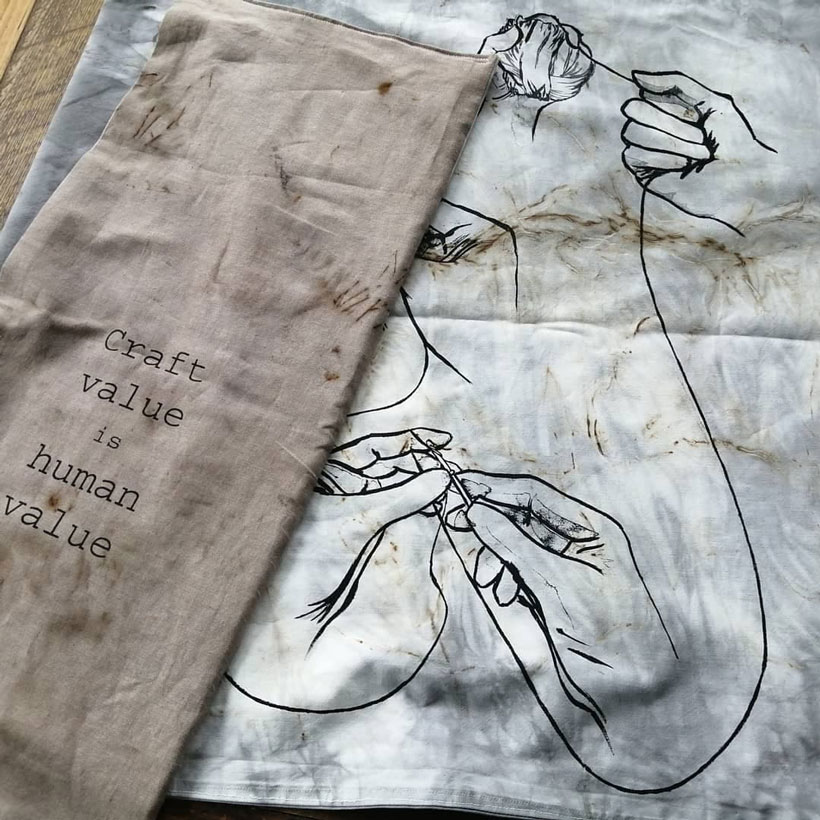
Craft value is human value tool roll. Printed with working hands and the humanitarian statement which has been pivotal in myself understanding the importance of craft.
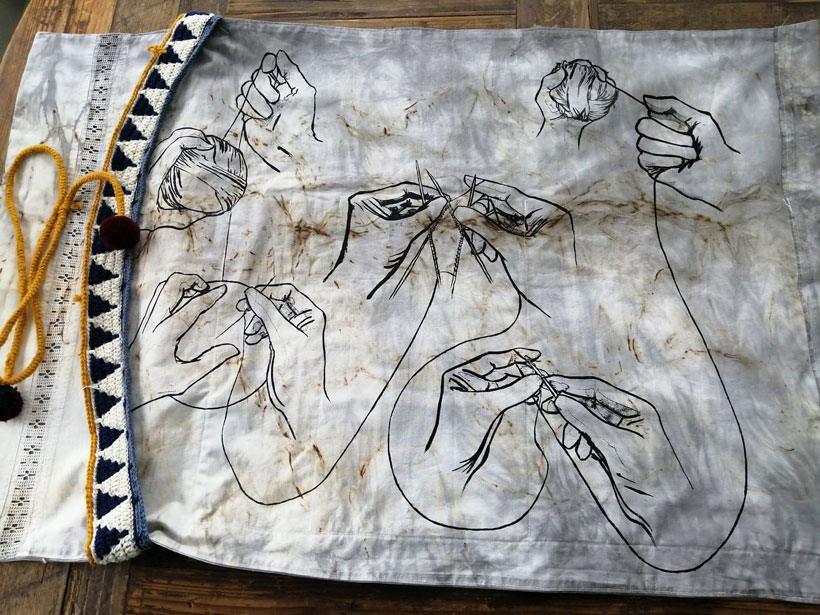
Open tool roll. Story of hand tools. The hands demonstrate their intelligence and the reuse of yarn, starting as a ball and ending as a ball. The hands as well as craft itself are tools.
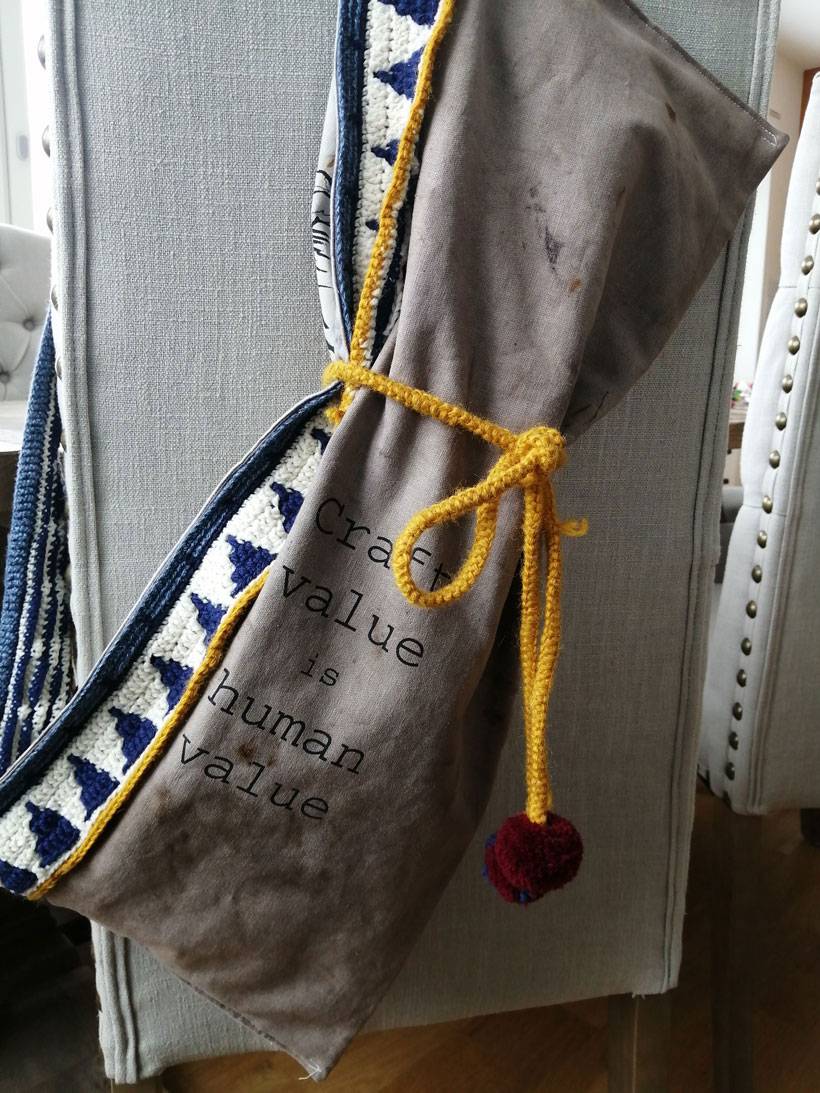
Closed tool roll. Nomadic skills are essential in telling us about human movement as well as the empowerment gained through being able to transport skills.
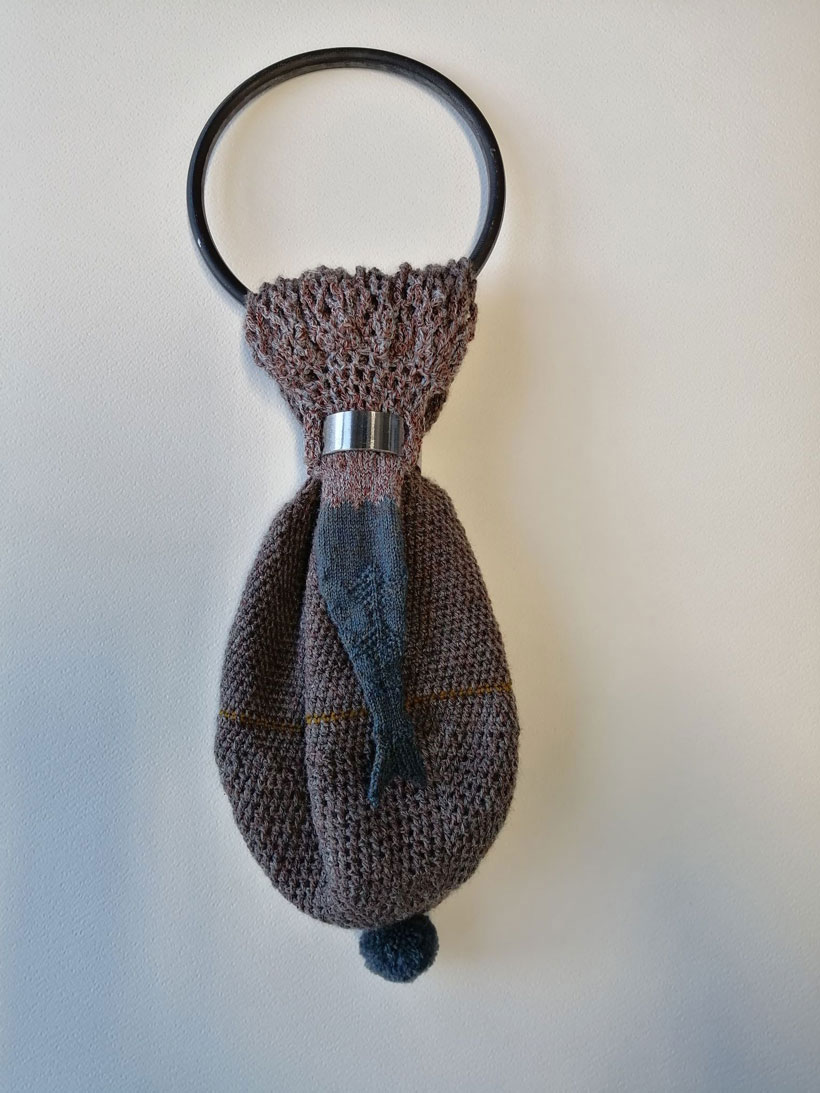
A fisherman’s wife. One of a set of three bags inspired by the fishermen’s wives from the UK in the 1800s who produced knitted garments without waste. All scraps were used to for example knit children’s socks, displaying striped patterns of different dye baths. These three bags were created with scraps and left over yarns.
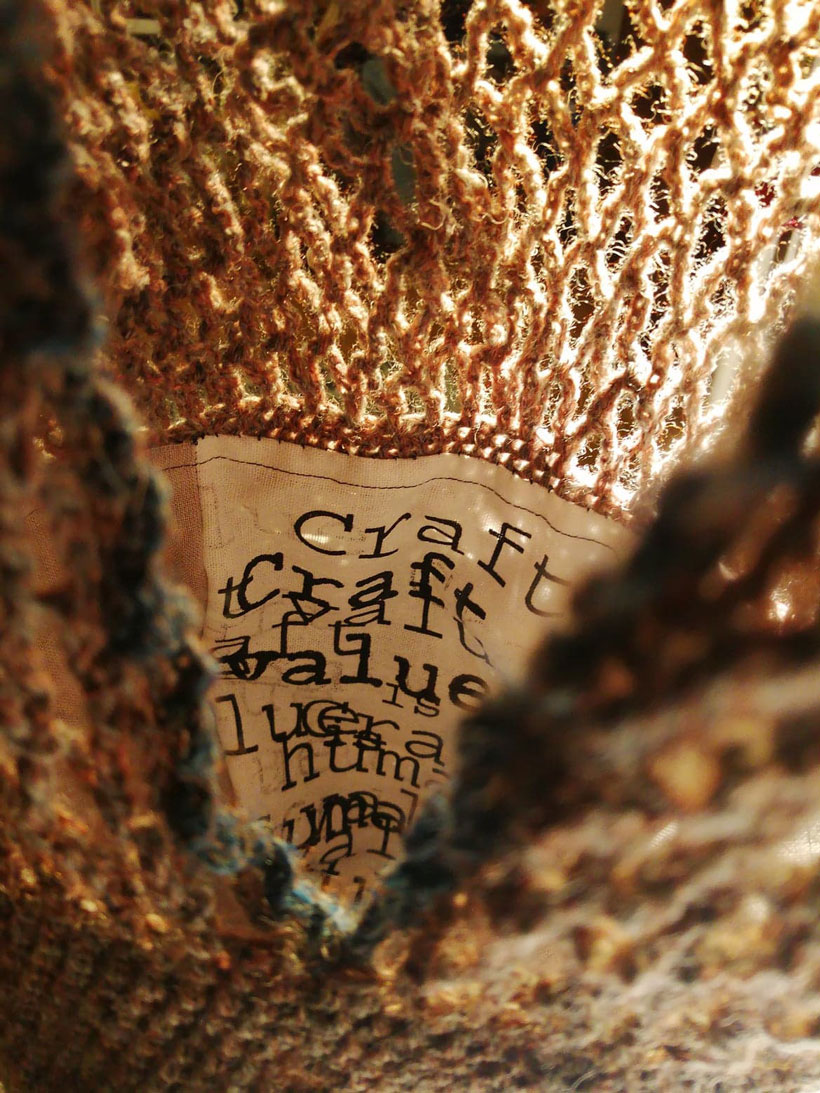
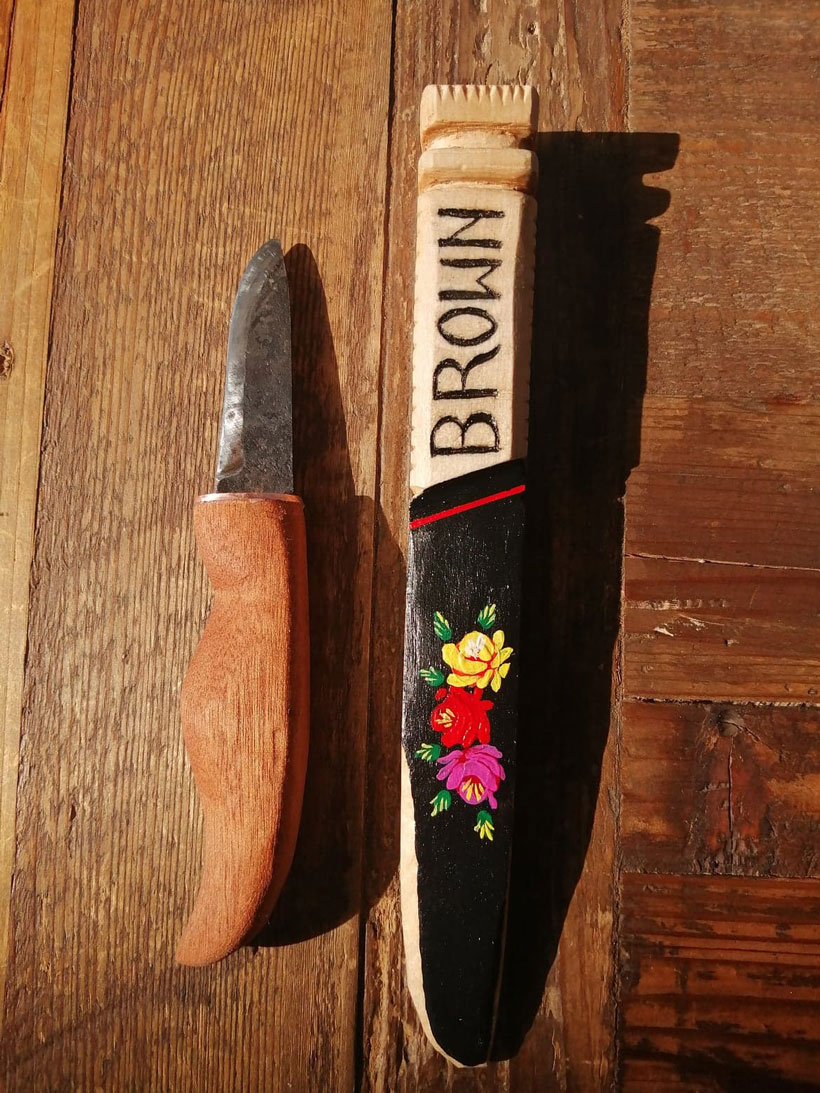
The knitting sheath and hand forged knife. The sheath was used by fishermen’s wives in the UK in the 1800s to enable freedom of movement while knitting and faster knitting speeds, demonstrating emancipation through movement as well as problem solving.
The knife was forged from an old file and an off-cut of cherry wood. This was my first knife and part of a continual journey of learning which enables us to feel humbled and empowered.
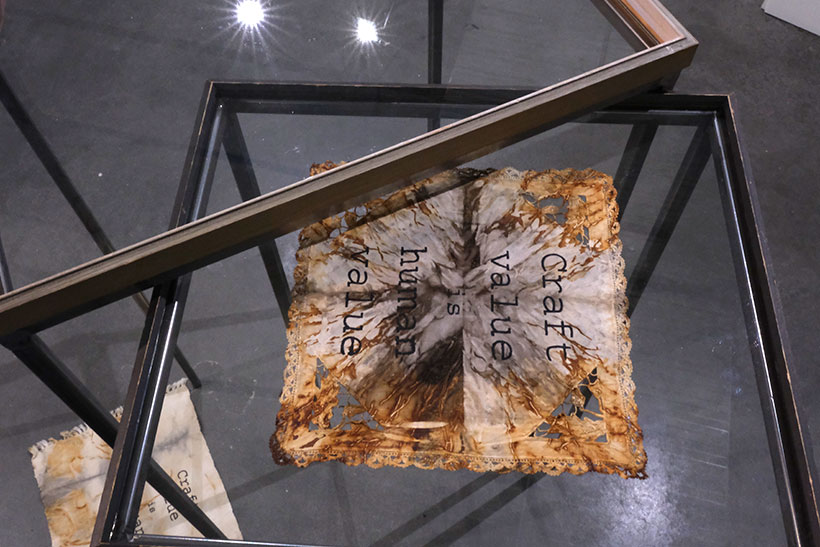
Printed statements, ‘craft value is human value’. Screen printed iron dyed fabric pieces. Steel frame tables, wood frame top and glass.
The concept of value is human imposed. Our value of people is proportionate to the societal value of craft. Learning to value an object means we value the humanity in the making.
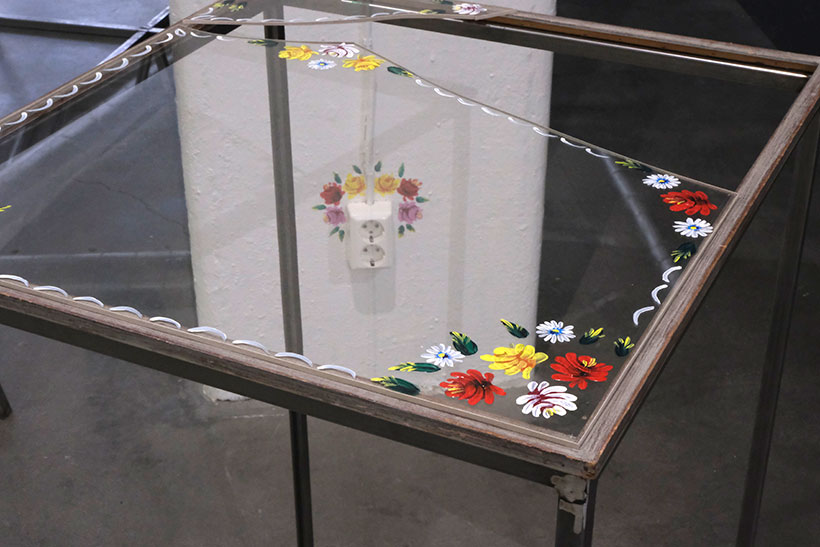
Broken Community. Healing symbolic images as ornamentation unite people. It is once again an imposed value of an object. Once broken, is now of value. A metaphor for a community which needs healing today.
I understand craft through the ‘three facets’. These are utility, aesthetics and connectivity. Crafted objects have a use, be that functional or symbolic. Aesthetics are idiosyncratic. Lastly, they enable a connectivity to people, history, cultures, to the self and even to nature.
Through this analysis, craft can be witnessed as a tool for humbling and empowerment. This juxtaposition reflects the complex ability of craft and current issues. I believe there is an important place for creativity which is holistic and essential to humanity.
I reflect on material relationships and industrial ways of living. I work with skills which enable non-static crafting. Meaning that the crafter can be mobile and empowered to combine their skills into the everyday. Working with undervalued, accessible skills such as knitting and crochet; which carry anthropological information, I use predominantly second-hand and unravelled yarn, encouraging questions of value through the crafting process.
Jag ser på hantverk utifrån ”tre aspekter”. Dessa är användbarhet, estetik och förbindelser. Hantverksföremål har en användning, det kan vara funktionellt eller symboliskt. Estetik är idiosynkratisk. Slutligen utgör de en länk mellan människor, till historien, kulturer, jaget och även till naturen.
Genom denna analys kan hantverk upplevas som ett verktyg för ödmjukhet och självbestämmande. Denna juxtaposition återspeglar den komplexa förmåga hos hantverket och aktuella frågeställningar. Jag tror att det finns en viktig plats för kreativitet som är holistisk och livsviktig för mänskligheten.
Jag reflekterar över materiella förhållanden och industriella sätt att leva på. Jag arbetar med färdigheter som möjliggör icke-statiska hantverk. Det innebär att hantverkaren kan vara mobil och får möjlighet att kombinera sina färdigheter i vardagen. När jag arbetar med undervärderade, lättillgängliga färdigheter som stickning och virkning; som innehåller antropologisk information, använder jag i första hand begagnat och upprepat garn som uppmuntrar till frågor om värde genom hantverksprocessen.